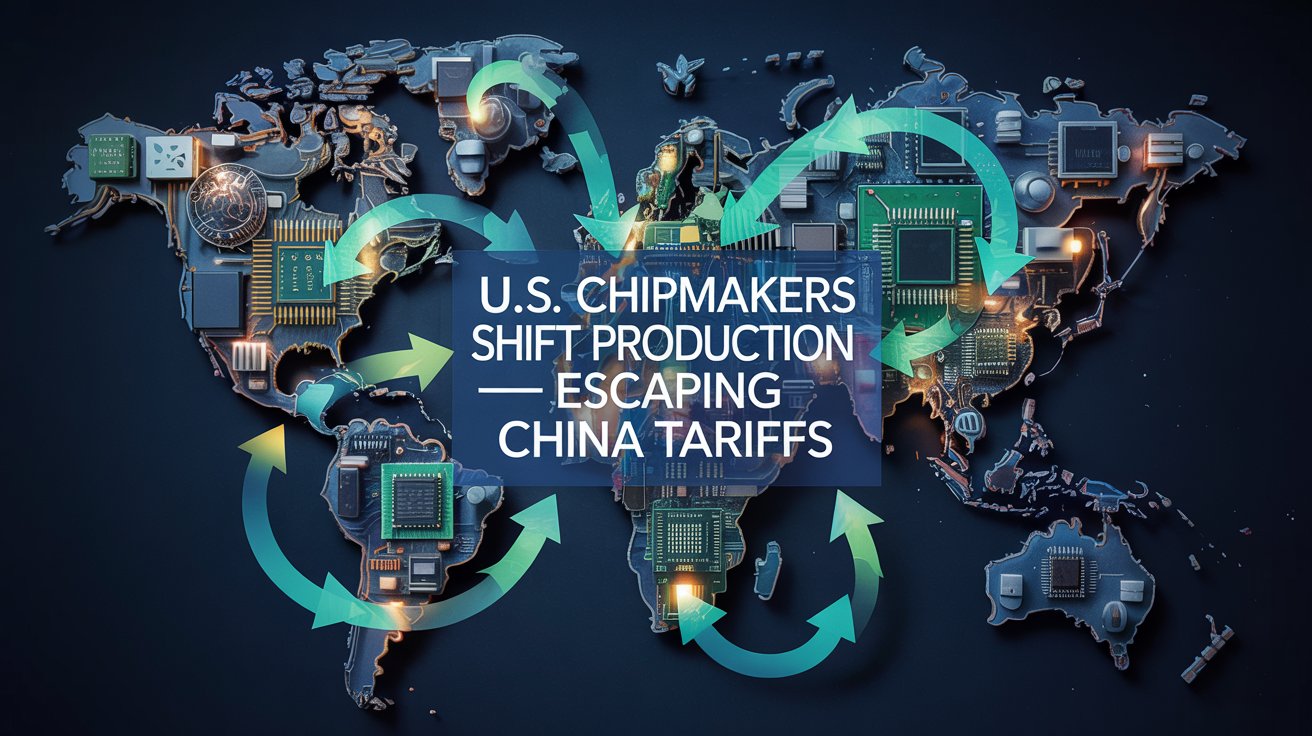Why U.S. Chipmakers Are Outsourcing to Dodge China’s Rising Tariffs – What It Means for America is a growing concern that reflects the shifting dynamics in global tech manufacturing and its long-term impact on U.S. jobs, innovation, and economic strength.
1. Why Are U.S. Chipmakers Outsourcing Now?
China has raised tariffs on U.S. semiconductor components in response to ongoing trade conflicts. These tariffs significantly increase the cost of making chips in or for the Chinese market, which is a major consumer of American technology. As a result, U.S. companies are rapidly shifting production to countries like Taiwan, India, Vietnam, and South Korea to maintain profits and avoid losing market access.
This outsourcing trend is driven by:
- China’s retaliatory tariff hikes on semiconductors
- High labor and regulatory costs in the U.S.
- Advanced chip production capabilities in Taiwan and South Korea
2. The Strategic Impact: What It Means for the USA
Outsourcing helps reduce manufacturing costs, but it also raises critical risks for the U.S.:
| Factor | Impact of Outsourcing |
|---|---|
| National Security | Increased dependency on foreign fabs like TSMC in Taiwan |
| Jobs & Economy | Loss of domestic high-skilled jobs in semiconductor plants |
| Supply Chain Stability | Potential disruptions during global crises or conflicts |
| Innovation Leadership | Slower tech advancement if production and R&D are separated |
According to the Semiconductor Industry Association, only 12% of global chips are now produced in the U.S., compared to 37% in 1990. Without strong domestic production, the U.S. risks falling behind in the next decade of technology.
3. Where Are U.S. Chipmakers Moving Production?
Here’s a breakdown of key outsourcing moves by major U.S. semiconductor firms:
| Company | Outsourcing Location | Reason |
|---|---|---|
| Intel | Vietnam, Malaysia | Lower testing/packaging costs |
| AMD | Taiwan (TSMC), India | Advanced chip node access, cost efficiency |
| Nvidia | Taiwan (TSMC) | Best-in-class chip manufacturing |
| Qualcomm | South Korea (Samsung) | Flagship mobile chip production |
4. Can the U.S. Bring Chip Production Back?
In response to these challenges, the U.S. passed the CHIPS Act, allocating $52 billion in subsidies and tax breaks to build advanced semiconductor fabs in America. Companies like Intel and TSMC are already constructing multi-billion-dollar facilities in states like Arizona and Ohio.
However, it will take years for these plants to be fully operational and competitive with Asian counterparts. Meanwhile, outsourcing remains the short-term solution for most U.S. companies.
5. What’s at Stake for America’s Tech Future?
America’s dominance in tech relies on both design innovation and production capability. If manufacturing continues to shift overseas, the U.S. risks long-term dependency on foreign nations for its most critical components—from smartphones to military systems.
To stay competitive, the U.S. must:
- Expand investment in domestic chipmaking
- Create policies that encourage high-tech manufacturing jobs
- Secure global partnerships that align with U.S. interests
Final Thoughts: Will the U.S. Regain Its Chip Leadership?
Outsourcing is a strategic necessity today—but it’s also a long-term vulnerability. U.S. chipmakers are doing what’s required to survive in a high-tariff global environment. However, if America wants to maintain leadership in the global tech economy, it must scale domestic manufacturing, align policy with innovation, and reduce overreliance on foreign fabs.
The next five years will define whether the U.S. remains at the forefront of the semiconductor industry or becomes dependent on others.





